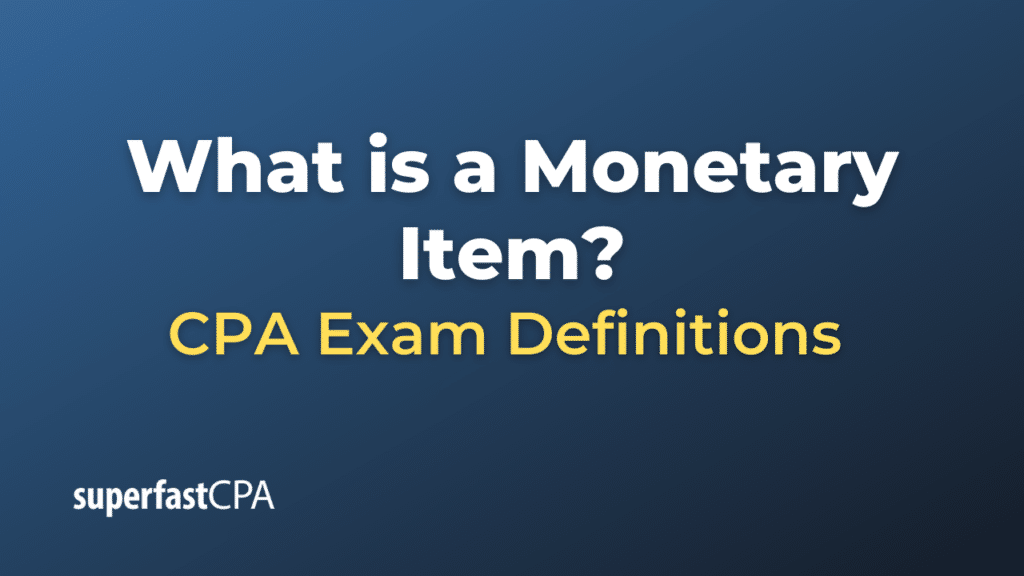Monetary Item
Monetary items are assets or liabilities that are fixed or can be determined into a fixed amount of money. They are measured in terms of money and can be readily used for buying and selling goods and services. Monetary items have a value that is stated or fixed in terms of an amount of currency.
Examples of monetary items are:
- Monetary Assets: These include cash, bank deposits, accounts receivable, and notes receivable.
- Monetary Liabilities: These include accounts payable, wages payable, rent payable, interest payable, bank loans, and long-term debts.
The defining characteristic of monetary items is that they represent a fixed or determinable amount of money. This means that they either already represent an amount of money (like cash) or they can be converted into a specific amount of money (like accounts receivable, which will be converted into cash when the customer pays their invoice).
In terms of financial reporting, monetary items are typically reported at their nominal (or face value) amount, not their current market or fair value. This is because their value is fixed in terms of money, regardless of changes in price levels or exchange rates. In contrast, non-monetary items, like property, plant, and equipment, inventory, or equity investments, can fluctuate in value over time due to various factors like changes in the market, physical deterioration, or improvements.
Example of a Monetary Item
Let’s use a hypothetical company, DEF Inc., to provide an example of monetary items.
Assume DEF Inc.’s balance sheet includes the following:
Monetary Assets:
- Cash: DEF Inc. has $150,000 in cash.
- Accounts Receivable: DEF Inc. has sold goods worth $200,000 to its customers on credit, and these customers are yet to pay for the goods.
- Notes Receivable: DEF Inc. provided a short-term loan of $50,000 to another company, which is due to be repaid within a year.
Monetary Liabilities:
- Accounts Payable: DEF Inc. owes $100,000 to its suppliers for purchases made on credit.
- Wages Payable: DEF Inc. owes $50,000 in wages to its employees, which will be paid in the next payroll cycle.
- Bank Loan: DEF Inc. has a bank loan of $200,000 which it needs to repay over the next few years.
In this scenario, DEF Inc.’s monetary assets total $400,000 ($150,000 + $200,000 + $50,000), and its monetary liabilities total $350,000 ($100,000 + $50,000 + $200,000).
Each of these items is a monetary item because it either represents an amount of money (like cash), or it can be readily converted into a fixed amount of cash (like accounts receivable), or it’s an amount of money that needs to be paid (like accounts payable or a bank loan). Non-monetary items, such as buildings, vehicles, inventory, or goodwill, are not included in this list because their value cannot be readily converted into a fixed cash amount.














